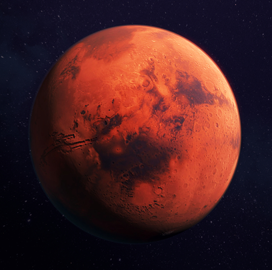
Supercomputing research
NASA Explores Retropropulsion Technology for Mars Human Landing Mission
NASA researchers are investigating retropropulsion, the leading deceleration technology option for a safe human landing on Mars.
Retropropulsion would eliminate the use of parachutes and instead fire rocket motors installed in a spacecraft’s heat shield to decelerate, the Oak Ridge National Laboratory said.
Supercomputers running NASA’s suite of computational fluid dynamics simulation and design tools have supported research projects exploring ways to safely land humans on Mars since 2019. The FUN3D software suite at the Department of Energy’s Oak Ridge Leadership Computing Facility allows researchers to perform CFD simulations of a Mars lander.
ORNL said doing away with parachutes is essential for the future human mission to Mars as the Red Planet’s thin atmosphere will not support parachute landing of large spacecraft carrying astronauts and various systems.
Eric Nielsen, a senior research scientist at NASA’s Langley Research Center, said supercomputing is critical to the mission because NASA does not have data to validate whether technologies will work in the Martian environment, adding that the space agency’s testing efforts are limited to ground facilities that do not have conditions similar to Mars.

Category: Federal Civilian




